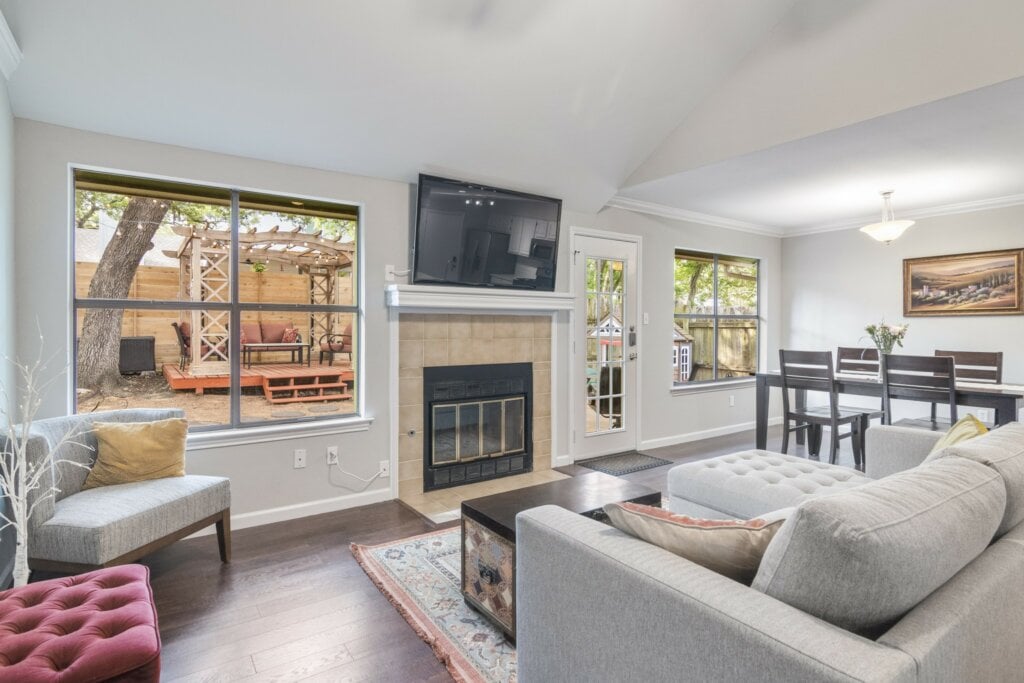In today’s competitive real estate market, effective video content has become a crucial tool for agents and brokers to showcase properties and attract potential buyers or renters. With the right strategy, real estate professionals can significantly increase their return on investment (ROI) through video marketing.
In this article, we will outline seven steps to help you maximize your ROI with strategic real estate video marketing.
Set clear objectives
Before embarking on your real estate video marketing journey, it’s essential to define the specific goals you want to achieve with your real estate videos. Here are three possible objectives you can consider:
Marketing a specific property: Your goal may be to generate more engagement with a particular listing posted on MLS and real estate portals. By creating visually appealing and informative videos, you can showcase the property’s unique features and attract potential buyers or renters.
Selling a neighborhood: Another objective could be to brand yourself as the expert in a specific area by creating videos that highlight the neighborhood’s amenities, attractions, and overall lifestyle. These videos can be featured on your website or shared on social media to help build your reputation and demonstrate your in-depth knowledge of the community.
Selling yourself or your team: You might also want to create a video that serves as a commercial for you, your team, or your company. These videos can be used on your ‘About Us’ page or shared on social media channels to showcase your expertise, values, and unique selling proposition. This type of content can help potential clients feel more connected to you and confident in your ability to meet their real estate needs.
Having clear objectives for your videos will help you create targeted content and measure the success of your real estate video marketing campaign.
Know your target audience
Understanding the demographics and preferences of your potential buyers or renters is crucial in creating videos that resonate with your audience and showcase the properties in the most appealing way. Consider factors such as age, income, family size, and lifestyle when tailoring your content. Here are a few examples of how to adjust your video content based on the target audience.
55+ age group: For properties or neighborhoods targeting the 55+ market, you might want to use more soothing and classic background music in your videos. Highlight features that cater to this demographic, such as single-level living, low-maintenance yards, and nearby amenities like healthcare facilities, community centers, or golf courses. Emphasize the sense of community, walkability, and accessibility in the neighborhood.
Urban areas popular among millennials: When targeting millennials in urban areas, consider using upbeat and contemporary music that reflects the energy of city life. Showcase the property’s modern features, such as smart home technology or energy-efficient appliances, and highlight the proximity to local hotspots like trendy restaurants, entertainment venues, and public transportation. Emphasize the property’s convenience, style, and connectivity.
Starter homes in affordable neighborhoods: For neighborhoods with starter homes, use a more casual and inviting tone in your videos to appeal to first-time homebuyers. Focus on highlighting the value and practical features of the property, such as ample storage, a functional layout, or a large backyard. In addition, showcase nearby amenities that cater to young families, such as parks, schools, and community events.
By customizing your video style and content based on your target audience, you can create more effective and engaging real estate marketing videos that attract potential buyers or renters with the right message.
Prioritize high-quality production
Investing in professional videography and editing is essential to ensure your videos are visually appealing and polished. High-quality videos not only represent your brand better but also can lead to higher engagement and conversion rates.
Companies like HomeJab have revolutionized the industry by making professional video production more affordable and accessible. For example, walkthrough videos start at just $205 and include professional editing and royalty-free music.
Scheduling your video shoot is made easy with HomeJab’s on-demand system. Simply input the date and time that works for you and the homeowner, and they’ll confirm the details. Next-day shoots are even possible in most areas, providing flexibility for your busy schedule.
Additionally, using professional high-quality videos can help you secure more listings. The potential return on investment is substantial when you consider the total commission earned from just one additional listing. If the videos are for communities, the value is even greater, as you can use them indefinitely to generate recurring revenue and achieve an even higher ROI.
Remember, first impressions matter, and a poorly produced video can reflect negatively on your business. By investing in professional video production, you demonstrate your commitment to quality and increase the likelihood of attracting more clients and listings.
Optimize for SEO
To improve your videos’ search engine visibility, it’s crucial to use relevant keywords, tags, and descriptions. This will help potential buyers find your videos when searching for properties online. Make sure to optimize your video titles, descriptions, and metadata to increase your chances of ranking higher in search results.
There are several plugins and tools available to help with video SEO. For instance, if you’re using WordPress, you can consider the Yoast Video SEO plugin, which helps you optimize your video content for search engines. Another option is the All in One SEO plugin, which supports video sitemaps and enables search engines to index your videos properly.
Uploading your videos to YouTube, in addition to your real estate agent’s website, can offer several benefits. YouTube is the second largest search engine, and by hosting your videos there, you can potentially reach a wider audience. Additionally, YouTube videos often rank well in Google search results, providing another avenue for potential clients to find your content. However, there are a few considerations to keep in mind:
Pros:
- Expands your reach and visibility
- Increases the likelihood of your videos appearing in search results
- Provides an easy-to-use platform for sharing and embedding videos
Cons:
- May lead users away from your website to YouTube, potentially causing a loss of control over the user experience
- Requires extra effort to maintain and optimize a YouTube channel in addition to your website
To maximize the benefits of using YouTube while minimizing the cons, ensure that your YouTube video descriptions contain links to your website, and use annotations or end screens to direct viewers back to your site. This way, you can leverage YouTube’s vast user base while still driving traffic to your own website.
By optimizing your videos for SEO and utilizing available tools and platforms, you can increase the likelihood that potential buyers will find your content and connect with your real estate services.
Use a variety of video formats
To cater to different audience preferences and showcase your listings from multiple angles, it’s essential to experiment with various types of videos. A diverse video portfolio can help you reach a wider audience and keep viewers engaged. Here are some video formats you should consider incorporating into your real estate marketing strategy:
Drone videos: Drone footage can provide a unique and captivating perspective of a property and its surrounding area. By capturing aerial views, you can showcase the property’s layout, land size, and proximity to nearby amenities or natural attractions. Drone videos are particularly beneficial for large properties, waterfront homes, or those with expansive landscapes that may be difficult to capture through traditional photography.
Community videos: Highlighting the lifestyle and amenities of a neighborhood or community can be a powerful selling point for potential buyers. Community videos can showcase local attractions, parks, schools, and events, helping buyers understand what makes the area unique and desirable. By creating community videos, you demonstrate your in-depth knowledge of the area and position yourself as a local expert.
First-person view (FPV) videos: For a more immersive and unique viewing experience, consider using first-person view (FPV) videos. These videos give viewers the sensation of exploring the property as if they were physically present, creating a more engaging and memorable experience. FPV videos can be particularly effective for showcasing properties with unique architectural features or intricate interior designs.
Incorporating a variety of video formats into your marketing strategy not only allows you to present different aspects of a property or community, but also helps you stand out from the competition by offering a dynamic and comprehensive visual experience to potential clients.
Leverage social media
Social media platforms offer unique opportunities to reach a wider audience and engage with potential clients. They allow you to showcase your real estate videos in a more informal and interactive environment. While we’ve already discussed the pros and cons of YouTube, let’s take a closer look at another popular platform, TikTok.
Pros of using TikTok:
- High user engagement: With its fast-paced, short-form video format, TikTok encourages users to interact with and share content, increasing the likelihood that your videos will be seen by a larger audience.
- Creative freedom: TikTok’s editing tools and effects allow you to create engaging and dynamic content that stands out from traditional real estate videos. This can help you attract a younger audience and differentiate yourself from competitors.
- Viral potential: TikTok’s algorithm rewards content that generates high engagement, meaning that your videos have the potential to go viral and reach a massive audience quickly.
Cons of using TikTok:
- Security concerns: Some critics argue that TikTok, being a Chinese-owned platform, poses potential security risks due to the company’s relationship with the Chinese government. Users may be concerned about data privacy and the potential for their information to be used against them.
- Limited audience: While TikTok is popular among younger users, it may not be as effective for reaching older demographics or clients who prioritize a more traditional approach to real estate marketing.
- Time investment: Creating engaging and unique content for TikTok can be time-consuming, and staying up-to-date with platform trends may require a significant commitment.
When leveraging social media for your real estate video marketing, it’s essential to consider the unique features, benefits, and risks associated with each platform. By selecting the most appropriate channels for your target audience and goals, you can effectively expand your reach and increase engagement with your content.
Monitor and analyze performance
To optimize your real estate video marketing strategy, it’s crucial to analyze your content’s performance, identify areas for improvement, and refine your approach based on the insights gained. Here are some methods and tools that can help you measure engagement and ROI for your video marketing efforts:
- Engagement metrics: Track views, likes, comments, shares, and click-through rates on your videos across various platforms. These metrics can help you gauge the level of interest and interaction your content generates, allowing you to identify what resonates with your audience and what needs improvement.
- Conversion tracking: Set up conversion tracking on your website to monitor actions taken by users after viewing your videos, such as filling out a contact form or scheduling a property tour. By tracking these conversions, you can determine how effective your videos are at driving leads and sales.
- Google Analytics: This powerful tool can provide valuable insights into user behavior on your website, such as how long visitors spend on pages featuring your videos, the bounce rate, and the number of unique visitors. By analyzing this data, you can assess the impact of your videos on overall user engagement and make data-driven decisions to improve your content.
- CRM integration: Integrating your customer relationship management (CRM) system with your video marketing efforts can help you track leads generated from your videos and measure their progress through the sales funnel. This can give you a clearer understanding of how your videos contribute to your overall sales and revenue.
- Social media analytics: Most social media platforms offer built-in analytics tools that provide detailed information about your content’s performance, such as impressions, reach, and engagement. By monitoring these metrics, you can refine your social media video marketing strategy to maximize your reach and impact.
- A/B testing: Experiment with different video styles, lengths, and formats to see what works best for your target audience. Use the data gathered from your analytics tools to compare the performance of different video variations and make informed decisions about your future content.
By consistently testing and iterating your real estate video marketing strategy, you can continuously improve your content, increase engagement, and maximize your return on investment.
By following these seven steps, you can create a strategic real estate video marketing plan that maximizes your ROI and helps you stand out in the competitive real estate industry. Remember, a successful video marketing campaign requires planning, creativity, and adaptability. Embrace these principles, and watch your business grow to new heights.











